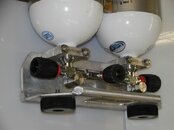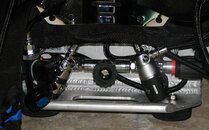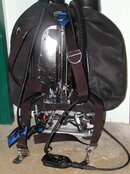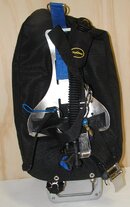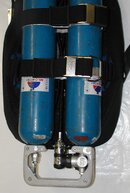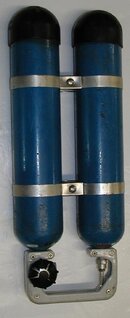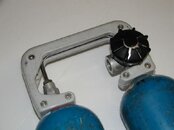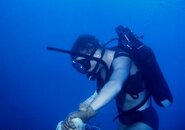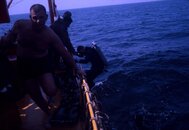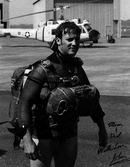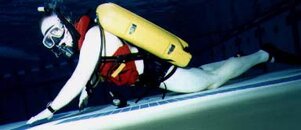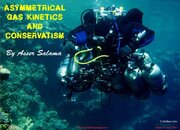You have seen it twice, as a result of what must be significant impact. By that description, it would most likely occur on the surface, either entering or exiting the water. Here, normal emergency procedures would be to drop weights and stay on the surface, perhaps with a snorkel in one's mouth. The likelyhood of this happening at depth is pretty low, IMO
The bail-out impact was entering the bell hatch commercial divers arent known for gentle movements. The second was on a wreck and the impact was surprising small, it just hit the hose fitting at the perfect angle. He was pulling himself into a small hatch and twisted a little too much. We debated for weeks suspecting a cracked hose fitting at the thread until we tried breaking one on the bench. It didnt take much to snap off at all when hit at the right angle.
It is only a 3/8" thread. The root diameter is about 0.343 with a hole that is close to 0.20". That is only a 0.0715 Brass wall. Add a 1½ to 2" long swaged lever and it is surprising that snapping off fittings isnt more common. Too bad stainless fittings are so expensive.
Maybe I missed it but what happens in the unlikely event of a regulator supply hose failure?...
We both agree that such a failure is rare, but then so is the need for a second source of gas in the first place. The question wasnt intended as a criticism. I thought there might be some check valves I was unaware of, which would negate the problem. Even then, the argument can be made that the cure introduces more failure potential than the problem it is trying to solve.
I am just glad to see that there are people who think beyond the dogma professed by far too many waving the DIR banner. Well done.




